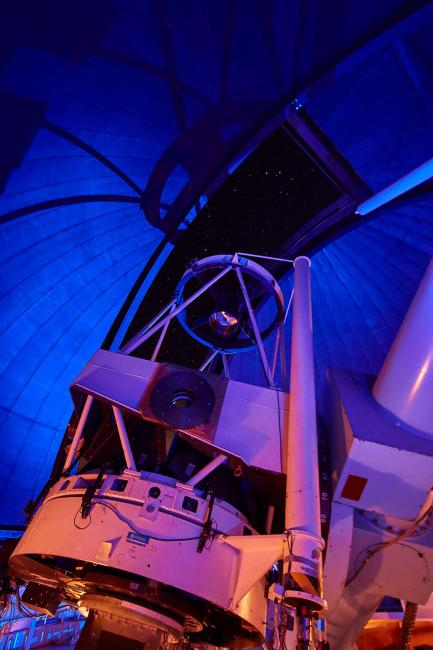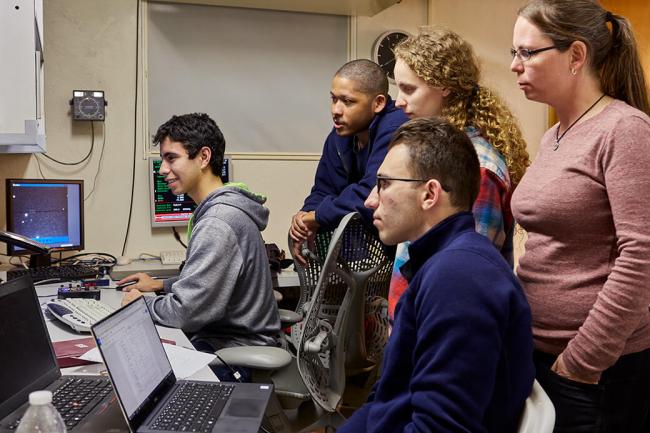1.5-meter Tillinghast (60-inch) Telescope
The 1.5-Meter (60 Inch) Tillinghast Telescope is a general purpose visible-light telescope located at the Fred Lawrence Whipple Observatory (FLWO) in southern Arizona, operated by the Center for Astrophysics | Harvard & Smithsonian. Astronomers use this telescope to measure the spectrum of light emitted by a wide variety of objects in the Solar System, the Milky Way, and in distant galaxies.
CfA Operated (OIR) | Open to CfA Scientists | Active

The Telescope and the Science
The FLWO 1.5-Meter Tillinghast Telescope started operations in 1969 on Mt. Hopkins in Arizona. The telescope is named for Carlton W. Tillinghast, Jr. who was assistant director of the Smithsonian Astrophysical Observatory through the 1960s. It is an optical telescope used exclusively for spectroscopy — measuring the colors of light emitted by astronomical sources. The Tillinghast Telescope is useful for many different types of observations, including a wide variety of stars, exoplanet systems, supernova explosions, galaxies, and the supermassive black holes known as quasars.
The primary instruments used on the Tillinghast Telescope were custom-built by CfA researchers: the Tillinghast Reflector Echelle Spectrograph (TRES) and the FAst Spectrograph for the Tillinghast Telescope (FAST). TRES is used to measure the motion of stars to follow up observations of exoplanets discovered using NASA’s Kepler/K2 observatory, the Hungarian-made Automated Telescope Network (HATNet), CfA’s MEarth observatory, and others. Astronomers also use TRES to measure the masses of stars in binary systems. FAST is used for a wide range of projects, including: observing of asteroids in the Solar System; studying of stars within the Milky Way and nearby galaxies; measuring the redshift of light from galaxies due to the expansion of the universe; and studies of supernovas.

Students work in the 1.5M telescope control room.
- How do stars and planets form and evolve?
- Why do galaxies differ so much in size, shape, composition and activity?
- What is the universe made of?
- Does life exist outside of the solar system?
- Quasars & Other Active Black Holes
- Exoplanets
- Supernovas & Remnants
- Variable Stars and Binaries
- Galaxy Formation and Evolution
- Galaxies - Merging and Interacting
- Solar System
- Stellar Structure and Evolution
- Star Formation
- Star Clusters
- Cosmology
- Planetary Systems
- Stellar Astronomy
- The Milky Way Galaxy
- The Energetic Universe
- Extragalactic Astronomy
Projects
2MASS Redshift Survey
AstroAI
DASCH (Digital Access to a Sky Century @ Harvard)
For that reason, the DASCH (Digital Access to a Sky Century @ Harvard) team are working to digitize the plates for digital storage and analysis. The process can also lead to new discoveries in old images, particularly of events that change over time, such as variable stars, novas, or black hole flares.